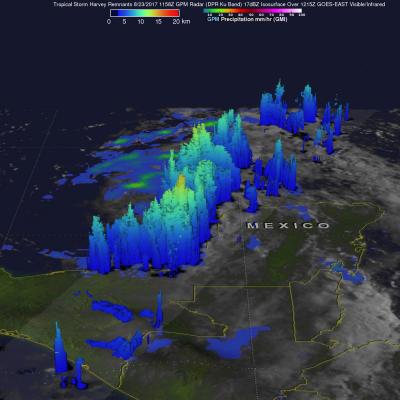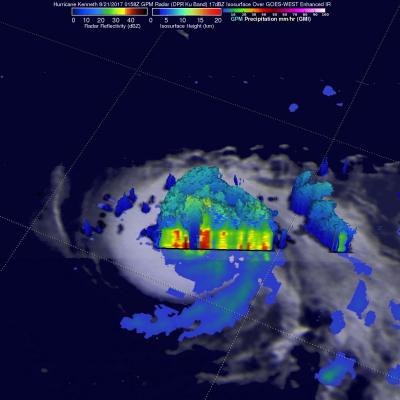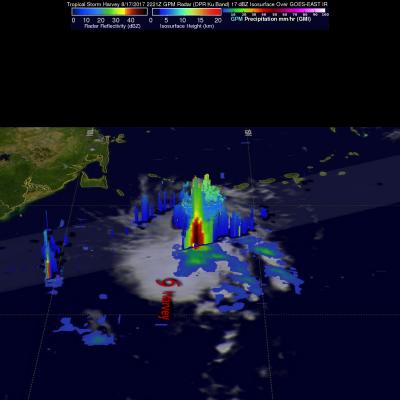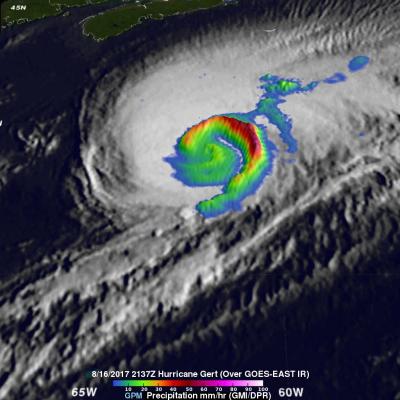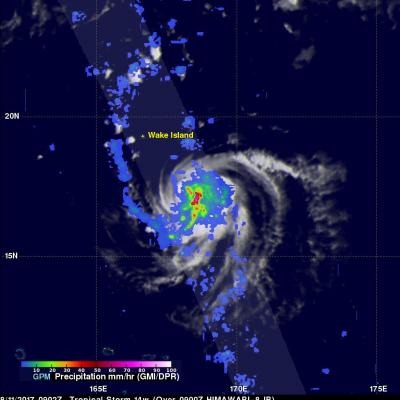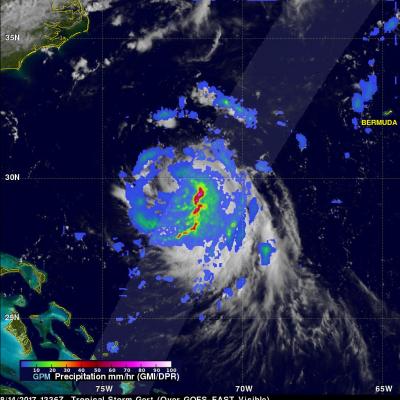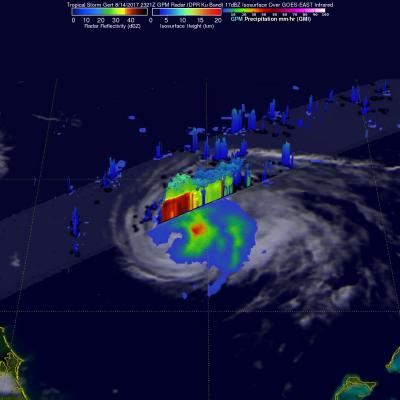GPM Observes Intensifying Hurricane Harvey's Rainfall
UPDATE: View the latest GPM overpass from 8/25/17 1141 UTC using the STORM Event Viewer: https://storm.pps.eosdis.nasa.gov/storm/cesium/EventViewer.html?positio… Hurricane Harvey has continued to intensify after regenerating in the southwestern Gulf of Mexico on Wednesday. Harvey's intensification has been aided by moving through an environment that includes low vertical wind shear and the warm waters in the Gulf Of Mexico. The Global Precipitation Mission (GPM) core observatory satellite



